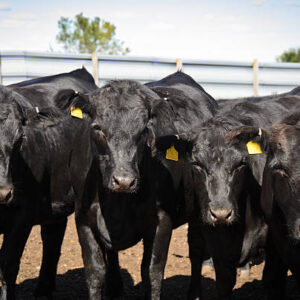Commercial
Housing Authority of Billings/ Fortress Developments Inc, 825 Avenue D, Com Fence/Roof/Siding, $217,000
Housing Authority Of Billings/ Fortress Developments Inc, 833 Avenue D, Com Fence/Roof/Siding, $217,000
MFM Capital LLC/ R & R Roofing, 301 Covert Ln, Com roof, $33,000
MFM Capital LLC/ R & R Roofing, 309 Covert Ln, Com Fence/Roof/Siding, $33,000
MFM Capital LLC/R & R Roofing, 1739 Cody Dr, Com Fence/Roof/Siding, $33,000
Tucker Veltkamp/Beartooth Holding & Construction, 320 Main St, Com New Restaurant/Casino/Bar, $400,000
Magnus Land Development LLC/Brown Builders Inc, 6301 Absaloka Ln, Com New Townhome Shell, $240,860
Magnus Land Development LLC/Brown Builders Inc., 6338 Absaloka Ln, Com New Townhome Shell, $240,860
Qwest Corporation/ Mechanical Technology Inc, 3011 2nd Ave N, Com Remodel, $101,000
Sisters Of Charity Of Leavenworth/ Saunders Construction Inc, 1233 N 30th St, Com Remodel, $11,000
Sisters Of Charity Of Leavenworth /Saunders Construction Inc, 1233 N 30th St, Com Remodel, $330,000
Julie Treat/Empire Htg. & Cooling, 2510 38th St W, Com Remodel, $250,000
Montana Rescue Mission/ Win-Dor Industries, 2520 1st Ave N, Com Remodel, $4,832
$351,585
J&G Family LLLP/Hi-Line Roofing Of Montana LLC, 6428 Southern Bluffs Ln, Com Fence/Roof/Siding $27,500
Braun-Ayers Properties LLC/Sprague Construction Roofing Division, 1916 4th Ave N, Com Fence/Roof/Siding, $54,189
Sam’s Real Estate Business Trust/NA, 4420 King Ave E, Com Remodel , $1,200,000
State Of Montana/Vertex Tower, 1204 W Wicks Ln, Com Remodel, $10,000
City Of Billings/Legacy Telecommunications, 2600 Central Ave, Com Remodel, $20,000
Southgate LLC/NA, 5201 Southgate Dr, Com Remodel, $100,000
Von Lee & Sheryl K Mecham/NA, 1400 Grand Ave, Com Remodel, $100,000
Billings Volunteers Of America/Timeless Construction & Design, 1439 Main St, Com Remodel, $49,151
JDS Real Estate LLC/Com Remodel, Cucancic Construction Inc., 1403 Main St, $5,000
Residential
NA/ Aaron Higginbotham, 2135 Entrada Rd, Res New Single Family, $252,888
Aviara Inc/Trent Buscher Construction, 3132 Falcon Cir, Res New Single Family, $211,609
Boyer Land Llc/Boyer Properties Llc, 2521 Blue Mountain Trl, Res New Single Family, $397,862
Vester A Wilson/MLS Construction Co, 873 Sapphire Ave, Res New Single Family, $267,699
Infinity Home/Infinity Home Llc, 2302 Entrada Rd, Res New Single Family, $241,855
McCall Development/ McCall Development, 1727 St George Blvd, Res New Single Family, $140,648
NA/McCall Development, 1731 St George Blvd, Res New Single Family, $132,182
McCall Development/ McCall Development, 1735 St George Blvd, Res New Single Family, $140,623
Magnus Land Development Llc / Brown Builders Inc., 6301 Absaloka Ln, Res New Town Home, $30,107
Magnus Land Development Llc /Brown Builders Inc., 6338 Absaloka Ln, Res New Townhome $30,107
Magnus Land Development LLC/ Brown Builders Inc., 6338 Absaloka Ln, Res New Townhome, $30,107
High Sierra Ii Inc/Infinity Home LLC , 2436 Bonito Loop, Res New Single Family, $245,015
L & L Construction LLC/ Lorenz Construction, 3424 Tahoe Dr, Res New Single Family, $256,029
Infinity Home/Infinity Home Llc, 682 Lakehills Pl, Res New Single Family, $372,626
Diverse Construction Llc/Diverse Construction LLC, 530 Winged Foot Dr, Res New Single Family, $263,284
Boyer Land Llc/Design Builders, Inc. 2516 Aspen Creek Trl, Res New Single Family, $294,582
Frickel, Loretta F & David R/HG Designs, 5244 Amherst Dr, Res New Single Family, $380,000
NA/McCall Development, 1719 St George Blvd, Res New Single Family, $132,682
NA/McCall Development, 1723 St George Blvd, Res New Single Family, $140,623
Wagenhals Land And Livestock/ Wagenhals Enterprises Inc, 1026 Daylight Ln, Res New Single Family, $325,000
Wagenhals Land And Livestock/Wagenhals Enterprises Inc, 1030 Daylight Ln, Res New Single Family, $265,000
The ATM Llc/Billings Best Builders Llc, 6302 Absaloka Ln, Res New Two Family, $350,000
The ATM Llc/Billings Best Builders Llc, 6306 Absaloka Ln, Res New Two Family, $350,000
Magnus Land Development LLC/MJ Construction, Inc., 6334 Absaloka Ln, Res New Two Family, $310,168
Magnus Land Development LLC/ MJ Construction, Inc., 6330 Absaloka Ln, Res New Two Family, $310,168


